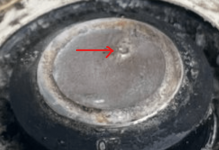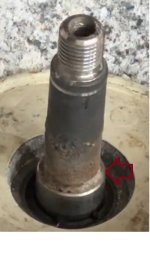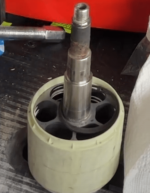DavidArmenB
Well-known member
- Sep 7, 2022
- 262
- Pool Size
- 16500
- Surface
- Plaster
- Chlorine
- Salt Water Generator
- SWG Type
- Hayward Aqua Rite (T-15)
Are you referring to this outer portion by the “lighter shade”?I work with steel all day every day and this was a defective piece of steel from the get go. I zoomed in on one of the pictures where you clearly see a clean and dirty portion of the break. The outer circumference is a lighter shade whereas the center is darkened which means the last part of the broken shaft was just the outer part because that's the new break. The dark area was fractured long ago somehow most likely in the manufacturing process that is why it's darkened. This motor doesn't nearly have any kind of torque to cause this. The link @JamesW sent you may be very interested to get this into their hands .......

Because I thought that that was a groove in the cylinder. The shaft was thinner in that small section. Can anyone confirm if the motor shaft has that groove? I thought the darker portion in the center, with the slightly raised edge, was the shear zone.








